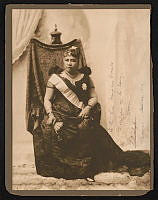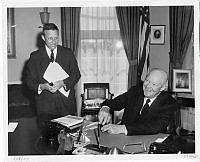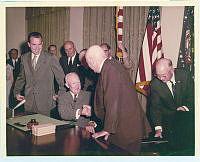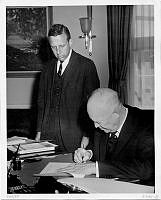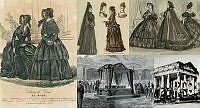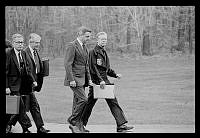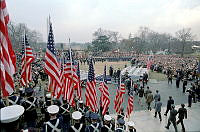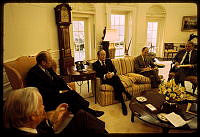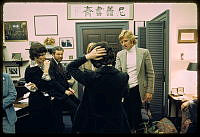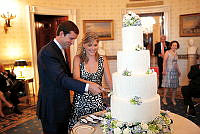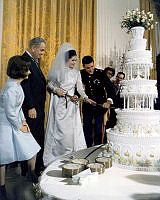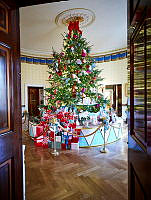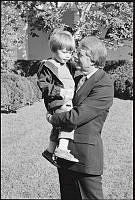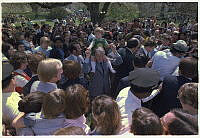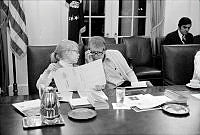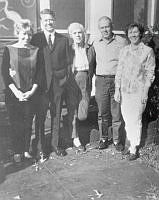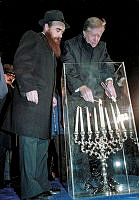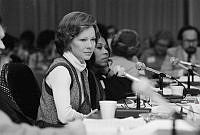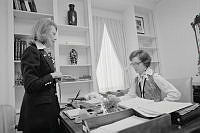White House Decorative Arts in the 1890s
Copyright © White House Historical Association. All rights reserved under international copyright conventions. No part of this article may be reproduced or utilized in any form or by any means, electronic or mechanical, including photocopying, recording, or by any information storage and retrieval system, without permission in writing from the publisher. Requests for reprint permissions should be addressed to books@whha.org
The extended family of Benjamin Harrison stretched the Executive Mansion's available living space to the limit and a number of beds were ordered to accommodate the family. Caroline Harrison was a life-long art student, and her interest in china painting led her to search the White House for old services. She had these repaired and preserved and can be credited with starting the collection of presidential china now displayed in the China Room. She also oversaw the refurbishing of the house after it was wired for electricity in 1891.
Grover and Frances Cleveland returned to the Executive Mansion in 1893. As before, they lived much of the time in a separate home for privacy. The Clevelands made few changes except to redecorate the Red Room with brighter red walls and a neo-classical frieze and to furnish the Cross Hall with a set of dark oak furniture. By the mid-1890s more flatware was needed for state dinners, and the first lady selected a high quality pattern of gilded silver with metal being provided by melting down old, miscellaneous White House flatware.

Dinner Fork and Breakfast Fork. Wm. B. Durgin Co., Concord, N.H., 1894. Ordered in 1894 by Frances Cleveland, this pattern is still used for state occasions.













